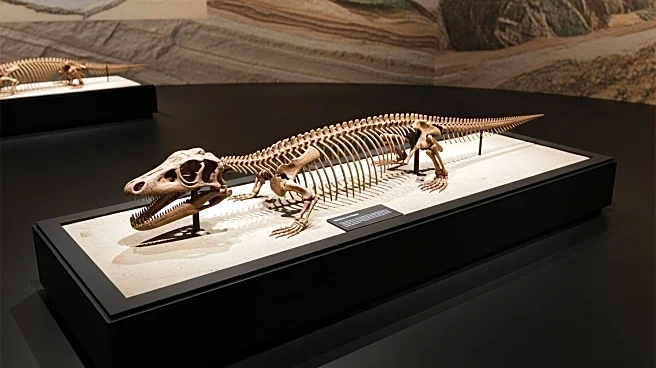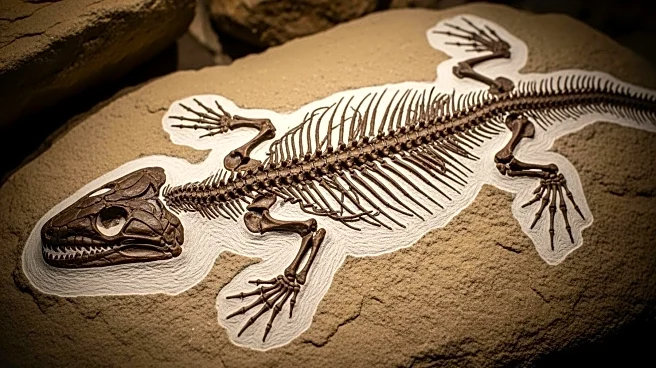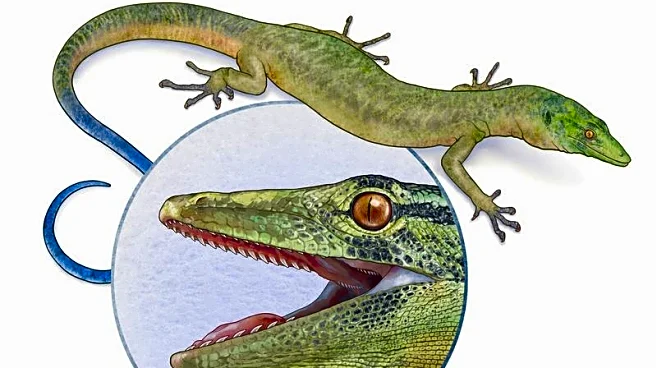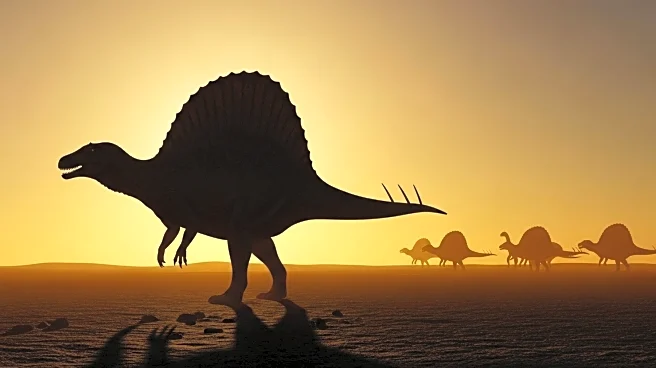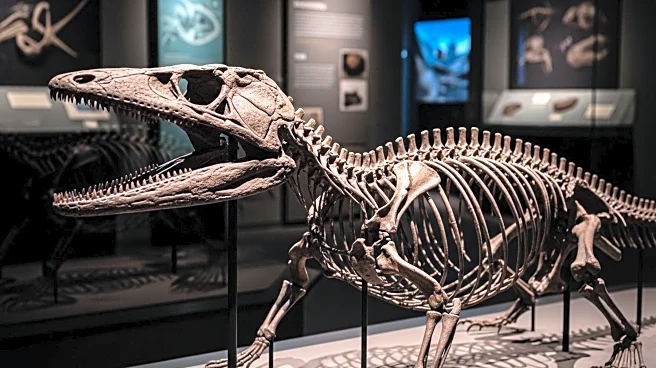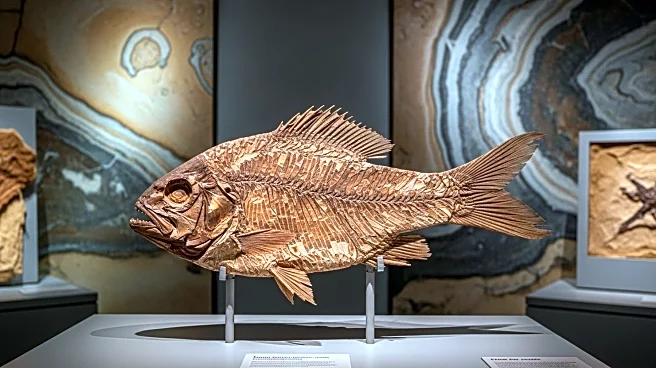What is the story about?
What's Happening?
A fossil discovered in Scotland, dating back 167 million years, is puzzling scientists due to its mix of snake-like and lizard-like features. Named Breugnathair elgolensis, the creature had snake-like teeth and jaw structures but lizard-like body proportions and limbs. This fossil is one of the oldest from the squamate group, which includes lizards and snakes. The discovery raises questions about the evolutionary path of snakes, as it blurs the line between lizards and snakes, suggesting a complex early evolution of these reptiles.
Why It's Important?
The discovery of Breugnathair elgolensis is significant for paleontology and evolutionary biology, as it provides new insights into the early evolution of squamates. Understanding the evolutionary history of snakes and lizards can help scientists piece together the broader picture of reptilian evolution. This fossil challenges existing theories and suggests that the evolution of snakes may have involved more complex pathways than previously thought, potentially leading to new research directions in the field.
Beyond the Headlines
The fossil's unique combination of features highlights the complexity of evolutionary processes and the potential for convergent evolution, where similar traits evolve independently in different lineages. This discovery may prompt a reevaluation of other fossils and encourage the search for additional transitional forms that could further illuminate the evolutionary history of snakes and lizards.
AI Generated Content
Do you find this article useful?
